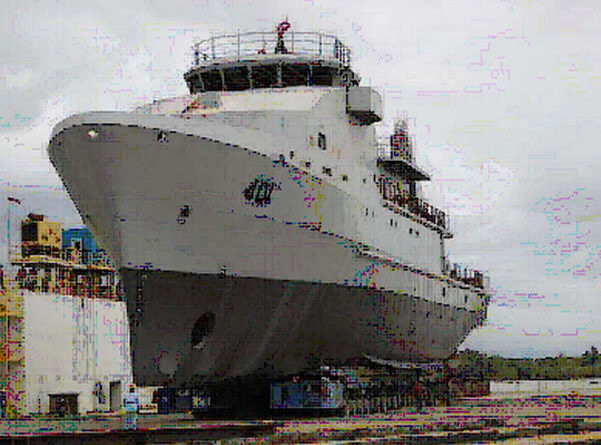US Defense Dept. Readies Two More Large Unmanned Ships For Navy Trials
Washington DC (UPI) Jul 14, 2021
A Naval Sea Systems Command-developed Iraqi 60-meter Offshore Support Vessel. US Navy briefing material indicate that early versions of the service’s large unmanned surface vessels could be based on OSV designs. US Navy Phot
The program, an element of the Defense Department’s Strategic Capabilities office, currently has two unmanned surface ships, the USV Ranger and the USV Nomad.The Navy’s Ghost Fleet Overlord program of Large Unmanned Surface Vehicles will be joined by two new ships in 2022, a Navy official said.
Two more are under development, Capt. Pete Small, Navy program manager for LUSVs, said.
“They will both be launched and go through a test and trial period in [Fiscal Year] 2022 in such that by the end of FY 22, we will have transitioned both of the first two vessels from SCO to the Navy, and we will have taken delivery of the two additional Navy-funded Overlord prototypes from new construction delivery and have four in inventory by the end of 22,” Small said.
The ships, which have no crew or officers and can be piloted remotely, were defined in a July 2021 Congressional Research Service report.
The vessels have largely been envisioned as 200 feet to 300 feet in length with full load displacements of 1,000 to 2,000 tons, making for a ship larger than a patrol craft and smaller than a frigate.
“The Navy wants LUSVs to be low-cost, high-endurance, reconfigurable ships based on commercial ship designs, with ample capacity for carrying various modular payloads, particularly anti-surface warfare and strike payloads, meaning principally anti-ship and land-attack missiles,” the report said.
The two ships in the fleet, and the two forthcoming ships, are based on offshore support vessels built for the oil and gas industry and are operated from an on-shore ground control station.
In trials in July, the existing ships traveled from Mobile, Ala., to Point Loma, Calif., a 4,421-nautical mile voyage, relying on manned operations as they passed through the Panama Canal.
“The transit by both vessels aimed to demonstrate that the vessels could reliably operate at sea for a significant amount of time and that the inherent reliability of the vessels was suitable for that type of mission” SCO Deputy Director Luis Molina said at the time.
Courtesy: Spacewar

